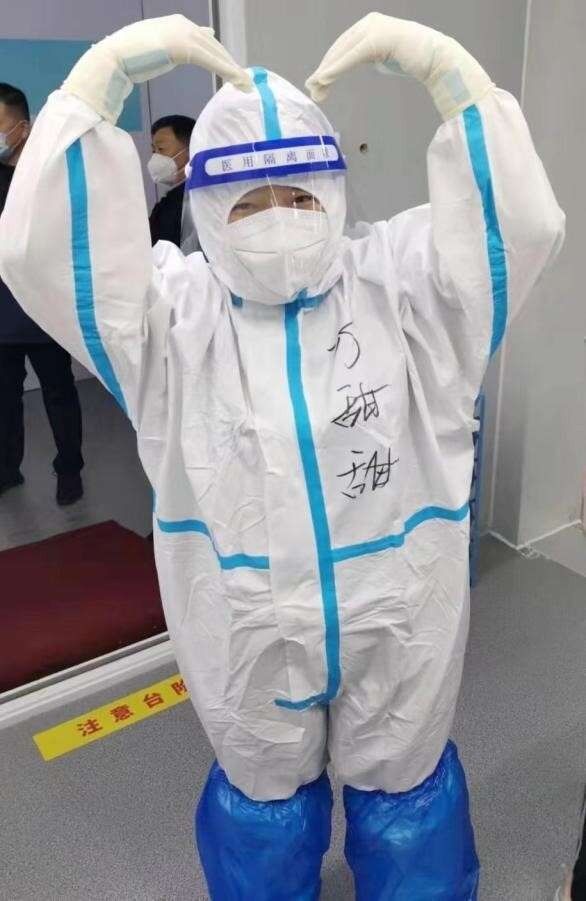Reporter Xing Ting from China Youth Daily and China Youth Daily
Wan Tiantian in protective clothing and other medical aid from Shandong Province in Shanghai Longyao Road Fangcai Hospital The team members shuttled between the beds together, always carefully protecting the health of each case. In the past month or so, Wan Tiantian has been moving forward from Qingdao Hongdao Fangcai Hospital to Shanghai Longyao Road Fangcai Hospital.

35-year-old Wan Tiantian is the Deputy Head Nurse of the Emergency Department of the Third Provincial Hospital of Shandong Province. She was with the team on March 13. Went to Qingdao Hongdao Fangcang shelter hospital, and fought on the front line of anti-epidemic for many days. On April 2, when Qingdao’s Hongdao shelter was closed and the quarantine period was about to end, Wan Tiantian received an order to aid Shanghai the next day. After receiving the order, she did not hesitate in the slightest. With the response speed of an “emergency person”, she immediately organized her luggage and equipment, and set off on standby again…
Before arriving in Shanghai, Wan Tiantian, who was attentive, had passed Online inquiry and chat with friends learned about the epidemic situation in Shanghai. At the same time, the electronic version of the operating systems and specifications for in-cabin treatment, hospital infection prevention and control, and psychological intervention that were operated in Qingdao Hongdao Fangcai was packaged and shared with the same staff. Comrades-in-arms who went to Shanghai to fight side by side.
Although I had psychological expectations for the situation of the epidemic in Shanghai, the moment it really arrived, I was still shocked: the city was shut down, home isolation, shortage of supplies, and the haze of the epidemic shrouded the city.
According to the previous work experience of Fangcang, at the beginning of the work, each interface has been straightened out, and patients can be received smoothly. However, in Shanghai, Wan Tiantian really experienced what a wartime state is – the shelter environment is not optimistic, and the problems such as insufficient informatization and insufficient materials need to be sorted out by medical staff together to better fight the epidemic and ensure everyone’s safety.

A group photo of some members of the Shandong Medical Aid Team to Shanghai (the second from the left is Wan Tiantian) during work breaks.
On the evening of April 6th, Wan Tiantian and other 10 team members entered the Longyao Road Fangcai Hospital in the first batch. In just 2 hours, she quickly learned about the operation process of the Fangcang cabin, so as to help The next step is to lay the foundation for the reorganization of the Shandong Provincial Medical Team Aid to Shanghai to take over the Longyao Road Fangcang shelter hospital. After coming out of the cabin, she revised the relevant system based on her experience in the Qingdao Fangcang cabin hospital, refined the process of team members entering and leaving the cabin, and treating patients, ready for the takeover of the whole system.
In order to start work as soon as possible, Wan Tiantian combined her work experience in Qingdao Fangcai Hospital, and with her colleagues, based on the existing human resources, the team optimized the allocation of personnel in the group, arranged shifts on duty, and supervised in-cabin nursing work. , carry out protection assessment, continuously improve medical staff’s awareness of sensory control, and work with everyone to carry out necessary psychological interventions for patients and team members to maintain stable operation in the cabin.
When she was resting, she would listen to the song “Thinking Brightly” repeatedly: “The protective suit is soaking wet, so why be afraid! The goggles are blurred, so why! Great love, let the people’s wish for well-being fly into the sky. We don’t need to think about the answer, we are destined to undertake the mission bravely.” Every time she listened to it, she was inspired.
(Photo courtesy of Shandong Medical Team Aid to Shanghai)